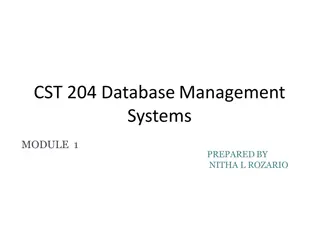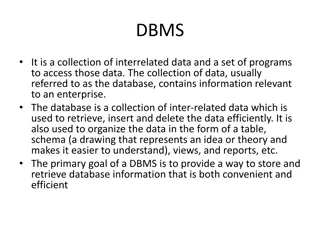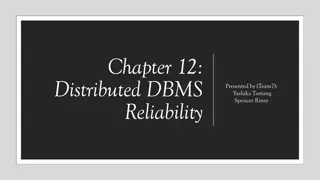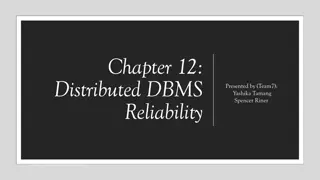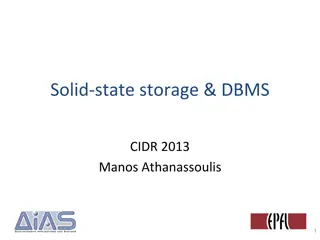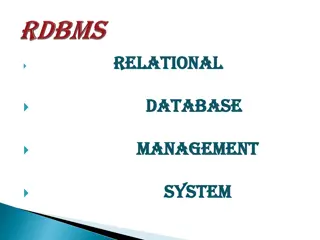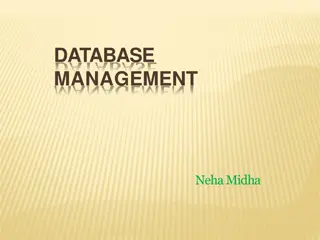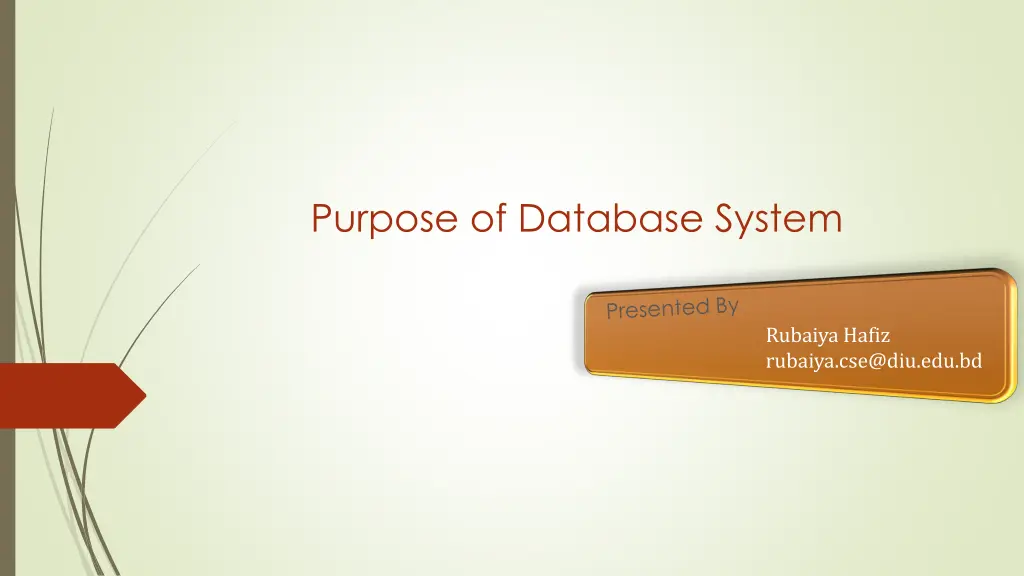
Database System: Purpose, Lessons & Challenges Explained
Explore the purpose of a database system, understand common issues in conventional file processing systems, and learn about data redundancy, difficulty in data access, data isolation, integrity problems, and atomicity issues. Dive into the world of databases and their critical role in information management.
Download Presentation

Please find below an Image/Link to download the presentation.
The content on the website is provided AS IS for your information and personal use only. It may not be sold, licensed, or shared on other websites without obtaining consent from the author. If you encounter any issues during the download, it is possible that the publisher has removed the file from their server.
You are allowed to download the files provided on this website for personal or commercial use, subject to the condition that they are used lawfully. All files are the property of their respective owners.
The content on the website is provided AS IS for your information and personal use only. It may not be sold, licensed, or shared on other websites without obtaining consent from the author.
E N D
Presentation Transcript
Purpose of Database System Rubaiya Hafiz rubaiya.cse@diu.edu.bd
Lesson ? Problems in Conventional File Processing System Data redundancy and inconsistency Difficulty in accessing data. Data isolation Integrity problems Atomicity problems Security problems
Conventional File Processing System The system stores permanent records in various files, and It needs different application programs to extract records from, and add records to, the appropriate files. Before database management systems (DBMSs) were introduced, organizations usually stored information in such systems.
Data redundancy and inconsistency Data redundancy occurs when the same data are stored more than once in one or more tables in a relational database. Data inconsistency means that the various copies of the data in a database no longer agree.
Difficulty in accessing data The conventional file-processing environments do not allow needed data to be retrieved in a convenient and efficient manner. More responsive data-retrieval systems are required for general use. clerks needs to find out the names of all students who live within a particular postal-code area.
Data Isolation Because data are scattered in various files, and files may be in different formats, writing new application programs to retrieve the appropriate data is difficult.
Integrity problems Integrity Constraints are the compulsory conditions which should be satisfied by every data value present in the relational table at any instance of time to ensure that the database consists of only meaningful and relevant data. There are four types of integrity constraints: Domain Constraints : Every attribute should have values within its defined domain. Key Constraints : There should be a primary key for every relational table. Entity Integrity Constraints : No NULL values should be there for the Primary Keys. Referential Integrity Constraints : In relational model, when two tables are related to each other with the help of some common attributes, the value of referencing attribute should be present in the referenced attribute else it should be NULL.
Atomicity problems A program to transfer $500 from the account balance of department A to the account balance of department B. If a system failure occurs during the execution of the program, it is possible that the $500 was removed from the balance of department A but was not credited to the balance of department B, resulting in an inconsistent database state.
Security Problems in DB Example In a university, payroll personnel need to see only that part of the database that has financial information. They do not need access to information about academic records.
Good things come to people who wait, but better things come to those who go out and get them. Anonymous


